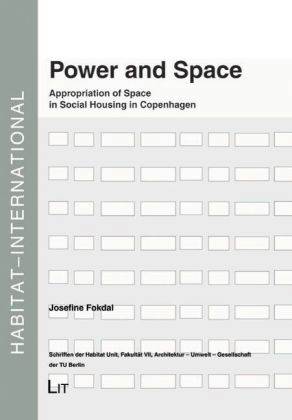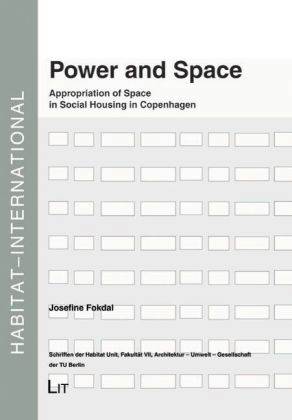
Door een staking bij bpost kan je online bestelling op dit moment iets langer onderweg zijn dan voorzien. Dringend iets nodig? Onze winkels ontvangen jou met open armen!
- Afhalen na 1 uur in een winkel met voorraad
- Gratis thuislevering in België vanaf € 30
- Ruim aanbod met 7 miljoen producten
Door een staking bij bpost kan je online bestelling op dit moment iets langer onderweg zijn dan voorzien. Dringend iets nodig? Onze winkels ontvangen jou met open armen!
- Afhalen na 1 uur in een winkel met voorraad
- Gratis thuislevering in België vanaf € 30
- Ruim aanbod met 7 miljoen producten
Zoeken
€ 19,95
+ 39 punten
Omschrijving
Architects are creators of places. Spaces are produced by the social practice of the user within places. Thus, the user is brought into the picture as a producer of space whereas architects are classified as producers of place. The book addresses the notion of power relations within undefined spaces of transition through case study documentations and by analyzing individual and common expressions in four social housing projects in greater Copenhagen. Understanding the struggle of power relations can help identify an interest articulated by the user. The articulations are made by means of additions that are placed within the spaces of transition. The conclusion that can be drawn is that power relations should be recognized by architects as a phenomenon of the dominating aspect of architecture. Neglecting to consider this domination in the conception of residential housing projects has a large impact on the user and his/her possibilities for practicing social interactions.
Specificaties
Betrokkenen
- Auteur(s):
- Uitgeverij:
Inhoud
- Aantal bladzijden:
- 112
- Taal:
- Engels
- Reeks:
- Reeksnummer:
- nr. 10
Eigenschappen
- Productcode (EAN):
- 9783825813901
- Verschijningsdatum:
- 5/09/2008
- Uitvoering:
- Paperback
- Formaat:
- Trade paperback (VS)
- Afmetingen:
- 146 mm x 203 mm
- Gewicht:
- 154 g

Alleen bij Standaard Boekhandel
+ 39 punten op je klantenkaart van Standaard Boekhandel
Beoordelingen
We publiceren alleen reviews die voldoen aan de voorwaarden voor reviews. Bekijk onze voorwaarden voor reviews.











